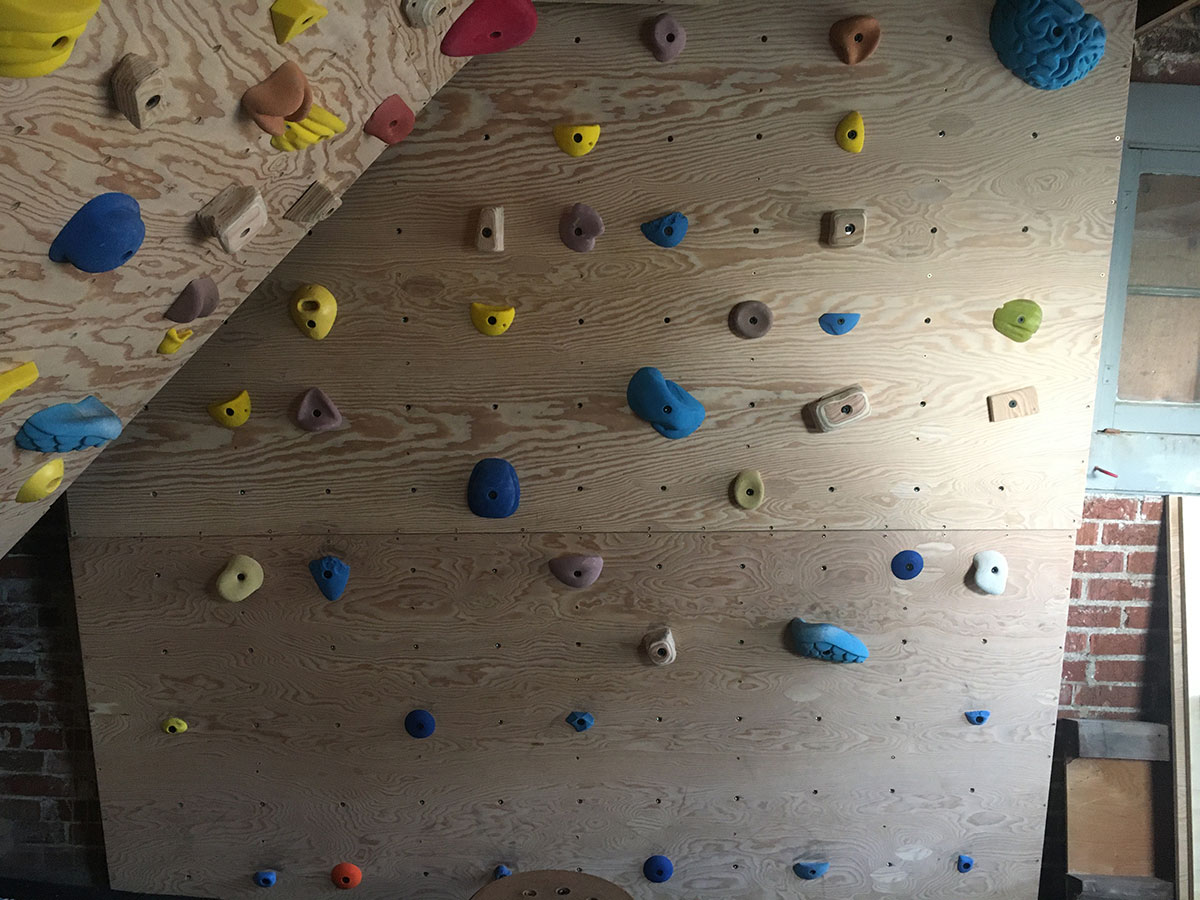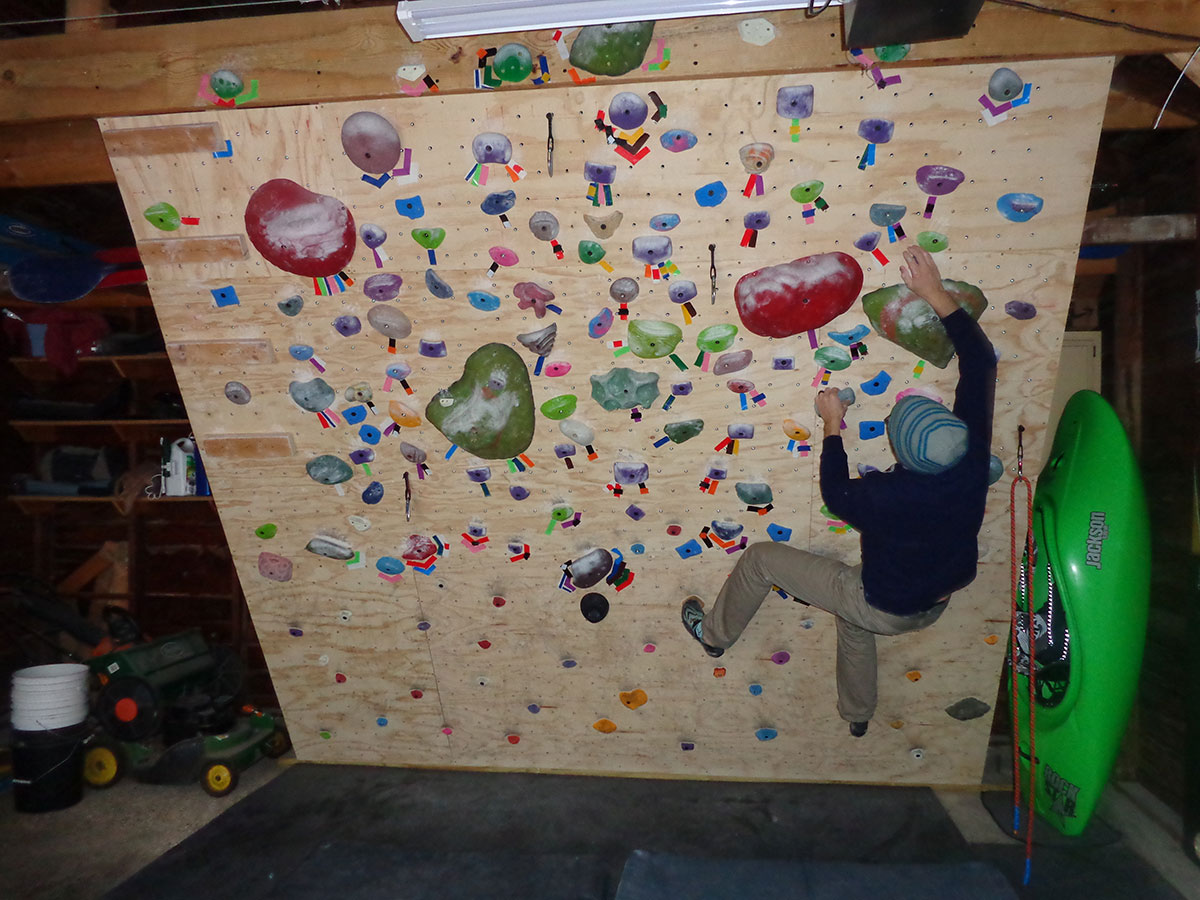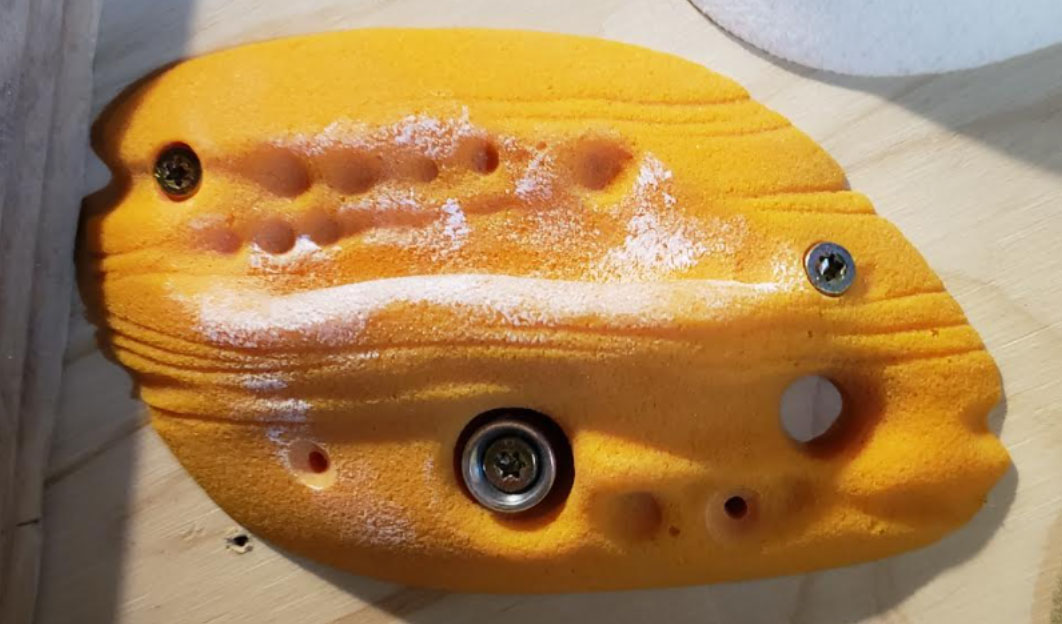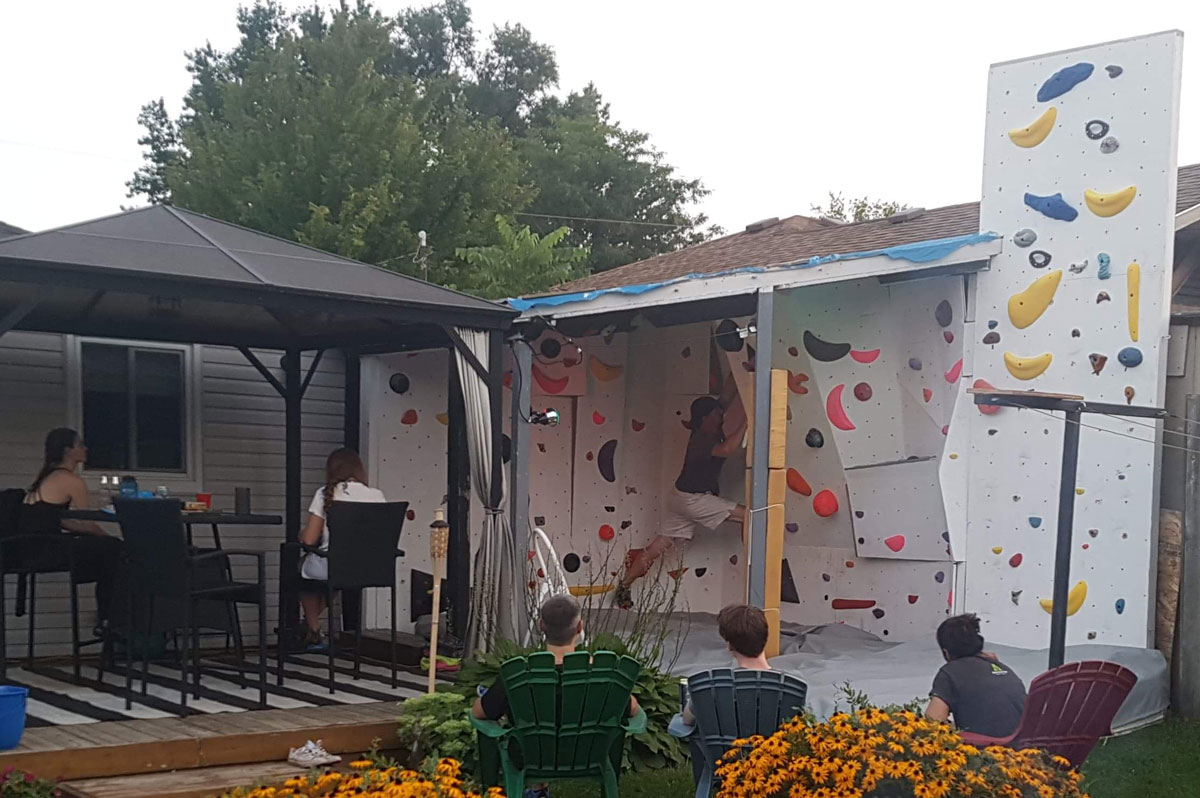
Advice from experienced homewallers can go a long way to getting the most out of your homewall. Our last FAQ focused on common mistakes, and this FAQ works alongside those observations (especially “seek advice”). Here are top tips from our group of experts…

Budget for Holds
Your hold collection may be the single most important thing to maintain your psyche to climb regularly. Regardless of how you purchase or create your holds, you need to budget appropriate funds and/or time to build your collection.
When purchasing holds, it can be surprising how expensive quality holds are. That is for a good reason as Louie Anderson points out – “the best holds are made from expensive and strong materials, designed by people who understand the ergonomics of repetitive use”. Small-batch hold suppliers may offer lower prices, but don’t always offer the same comfort and durability of established brands. Even if you are on a shoestring budget, you will benefit from investing in some plastic shapes.
Save money by purchasing used holds from your local climbing gym. Most facilities cycle their hold collection, and it’s likely their oldies are still goodies. Don’t be afraid to ask if they’d like to sell some old holds. Online forums also are a good source for used holds.
Making holds will stretch your budget if you have the free time to spend. Wood is the preferred medium, it’s relatively easy to carve and shape with some basic tools, and it’s friendly on the skin. Those wood scraps can easily turn into simple edges and pinches. You can also get creative with rocks, PVC pipes, and other materials. Check out DIY Holds on Facebook for inspiration. Making your own plastic holds using silicone molds can be fun, but it’s hard to save much time or money after all the expense, and your wall ends up with many copies of the same shapes.

Diversify Your Hold Collection
You will want a wide variety of shapes and sizes. This will help to keep you motivated and also broaden your climbing skills. For options check out our list of hold and volume brands.
Your goals will drive your hold variety. Who will be using the wall? Family walls need plenty of simple incuts so the young kids can top out, but also more challenging holds to keep it interesting for the more experienced climbers. Kenny Matys says “when building a vertical wall for kids, we recommend sidepulls, rails, pinches, and slopers so that Mom and Dad who climb V2 are still challenged.” Walls for training will have more crimps and difficult grips. Community walls need variety that match the diversity of all the people using the wall.
It’s tempting to saturate with small holds since they cost less and you can fit many onto a small space. But small holds are not as accessible to new climbers, not as conducive to long or mellow sessions, and make it harder to warm up on your wall and set climbs with good variety.
Get some large full-hand holds to go along with the smaller holds. Even if your wall is mostly for training V10s you will benefit from some slopers. Jugs and larger holds are good for warm-ups, circuits, and your friends who are new to climbing.

Add Plenty of T-Nuts
Every additional t-nut on your homewall expands your options. More t-nuts means better fine-tuning when routesetting, and also allows a higher density of holds for spraywalls.
How many t-nuts is enough? Answers vary from 72-per-sheet to over 250. Lean towards more, you won’t regret it later. Here are a bunch of t-nut layouts.
Add more t-nuts during construction since it’s the easiest time to do so. Stack your plywood to drill holes through several sheets at once, and plan a grid that maximizes your options. It’s possible to add t-nuts later, but it’s more laborious and random. Screw-ons can be placed in between spaces, but it’s nice to have the existing t-nut.

Use Plenty of Screws
Every additional screw adds strength, whether it’s attaching wood, mounting volumes, or adding holds. And screws are among your least expensive materials, so don’t skimp here.
Think about the forces and leverage on the hold or surface. Imagine a climber dangling from that spot, and make sure there is adequate support. Consider big dynamics moves, both with your hands and feet. If in doubt, add a screw or two.
Use set screws with bolt-on holds. Jackie Hueftle notes: “Time and weather can cause holds to loosen. One or two set screws can keep a hold from flexing or spinning. Fewer spinners is better.” Especially for oblong shapes with a long tail that have a tendency to “propeller”, always have a set screw or two in addition to the bolt.
One screw does NOT replace a bolt. Compare the thickness of a bolt versus a screw. They are totally different sizes. Single screws can break and are not adequate for body weight. Using a Lonestar or similar bolt-hold-filler is a great tactic, but only when used with additional screws to support the hold properly.

Invite Other Climbers
For most of us, climbing is better with friends. We learn from and motivate each other. Climbing with other people keeps it fun. Post “homewall partner wanted” to your social media and you will have plenty of friends join you. (To mitigate legal risk, you might ask them to sign a waiver, many homewallers do this now).
Involve friends from day one and invite them to help you build the wall. Lifting heavy frames and plywood into place is a hard job solo. They will become invested in the project with you, and may even help cover some of the costs, or contribute holds.
Staying motivated alone is difficult. Inviting others will keep it interesting. Everyone has their own style of climbing and setting, so more people will keep the climbing fresh. You will push each other and be able to socialize while training.

Homewaller FAQ Team
We are fortunate to have the combined knowledge and experience of Louie Anderson (Legacy Ascension, Setter Showdown), Jackie Hueftle (Kilter Grips, Routesetting Institute), Kenny Matys (Atomik Holds) and Scott Rennak (CBJ, Reach Climbers). All four answer and review every question together.

Scott has been promoting indoor climbing since 1997 when he bought Climb Time of Cincinnati and started what would become the American Bouldering Series. Since then he has helped hundreds of small businesses grow including climbing gyms and manufacturers. Scott is the owner and publisher of CBJ, and is available for projects through Reach Climbers. In his free time he still scours nearby hills for fresh boulders, skis all year, and is a dedicated father.









